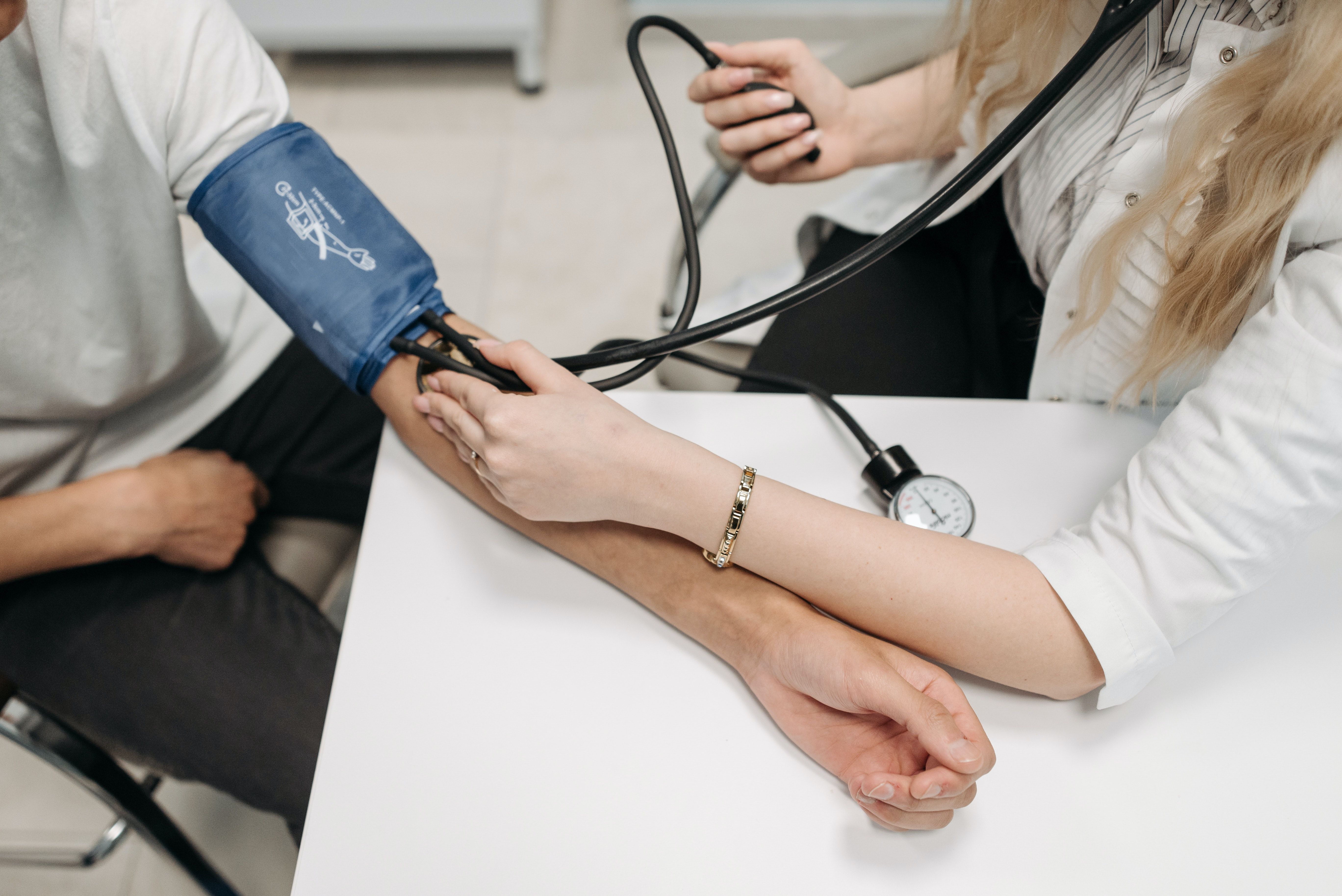


Eating disorders are mental illnesses that also pose significant risks to a patient’s physical health. They affect nearly every part of the body—from the nervous system to the brain to the heart to the digestive tract—and these effects can be quite serious. In fact, eating disorders have the second highest mortality rate of all mental illnesses, behind only opioid addiction.
In general, outpatient treatment should be the first line of defense for an eating disorder, as it causes the least disruption to a person’s life and research shows it’s just as effective as more intensive forms of treatment. But because of the effect eating disorders can have on physical health, patients sometimes need medical stabilization in a hospital before they can begin to address the psychological, emotional, and behavioral aspects of their illness through outpatient care.
Determining whether or not a patient needs to be admitted for medical stabilization can be a tough call for healthcare providers to make. Use this guide to better understand what to consider when making this decision so you can provide the best care to your patients.
Why might a patient with an eating disorder need hospitalization?
Eating disorders can put someone in physical danger for a number of different reasons, one of the big ones being the effects of severe food restriction. “The serious physical health risks of eating disorders are often the result of a lack of adequate nutrition—also known as low energy availability, or LEA—and the associated weight loss,” explains Michele Zucker, MD, Medical Director at Equip. These physical consequences include:
- Abnormal heart rhythms, including very low heart rates (bradycardia) that can lead to death if not managed properly
- Kidney damage or failure
- Liver dysfunction or failure
- Pancreatic dysfunction and pancreatitis
- Slowing of movement of food through the gastrointestinal system that leads to vomiting and inability to keep in food
- Low blood pressure, which can lead to dizziness upon standing, and fainting
- A weakened heart, and potentially even heart failure
- Severe malnutrition may also cause a condition called pericardial effusion, where fluid accumulates in the sac surrounding the heart. If this fluid collection becomes large enough, the heart is unable to beat properly and keep blood moving throughout the body.
But food restriction isn’t the only eating disorder behavior that can put someone in physical danger—there are several other behaviors that can lead to serious medical complications. Some of the risks to be aware of include:
- Vomiting to get rid of food may result in bleeding from the esophagus, which can cause a significant amount of blood loss. Excessive vomiting can also lead to potentially dangerous changes in the body’s acid/base status, as well as low potassium.
- Overuse of laxatives can cause low levels of potassium, sodium, magnesium, and phosphorus, which can affect nearly every organ system.
- Excessive exercise contributes to low heart rates.
- Water loading (drinking excessive amounts of water or other fluids in order to influence weight) can cause dilution of electrolytes including potassium and sodium. Very low sodium levels can cause seizures.
- Avoidance of drinking adequate fluids or overuse of diuretics can lead to dehydration, which can contribute to kidney dysfunction or failure, dizziness, and fainting.
Lastly, there is a risk of refeeding syndrome if nutritional rehabilitation isn't done correctly. “When someone starts eating again after a period of very low nutrition, it can result in shifts in fluids and electrolytes,” Zucker explains. “These shifts may affect many organ systems, and can lead to serious complications, including body swelling, double vision, confusion and disorientation, nausea and vomiting, muscle weakness, trouble breathing, abnormal heart rhythms, and even death if not properly managed.”
Medical criteria for hospitalization: key indicators
Many providers use the American Psychiatric Association Practice Guidelines and the Society for Adolescent Health and Medicine factors to support hospitalization to determine if a patient may need to be hospitalized for medical stabilization. Their criteria is:
- Very low weight (<75% of the 50th percentile BMI for age and sex)
- Dehydration
- Electrolyte disturbance (low potassium, sodium, phosphorus)
- Physiological instability
- Severely low heart rate (<50 beats/minute daytime; <45 beats/minute sleeping)
- Abnormally low blood pressure
- Low body temperature (<95 degrees F, <35.6 degrees C)
- Orthostatic changes in pulse or heart rate
- Failure to thrive/arrested growth and development
- Uncontrollable bingeing and purging
- Medical complications of malnutrition (for example fainting, seizures, heart failure, kidney failure, liver failure, pancreatitis, etc.)
- Concurrent medical or psychiatric conditions that limit appropriate outpatient treatment (like type I diabetes, obsessive compulsive disorder, or a suicide attempt)
If a patient meets any of the criteria above, they may need inpatient hospitalization—however, this checklist alone isn’t enough to determine if a patient needs a higher level of care. “Our bodies are designed to stay alive, so they accommodate malnutrition until they can't, “ says Kara Pepper, MD, East Coast adult medical supervisor for Equip. “People can come to the doctor's office and have normal labs, but that doesn't mean there are no eating disorder behaviors going on. You need to talk to your patients.” She encourages providers to screen everyone for eating disorders.
Additionally, keep in mind that weight is only one factor. “You also need to look at how quickly a patient’s weight changed, and the frequency and intensity of their engagement in eating disorder behaviors,” says Heather A. Dlugosz, MD, Medical Director at the Harold C. Schott Eating Disorder Program. Pepper agrees, adding that, “people can have very significant malnutrition if they lose significant weight in a short amount of time, even if their BMI doesn't reflect that they're underweight.”
Treatments provided during inpatient hospitalization
While inpatient stabilization may sometimes be required, it’s important to understand that this level of care is meant to be short-term and intensive. Patients may remain in a hospital setting for a few days or weeks, then transition to a lower level of care.
The exact care provided will vary from hospital to hospital, but effective inpatient treatment for an eating disorder should be tailored to the individual and address multiple different aspects of the illness. It typically involves a multidisciplinary team that monitors the patient and a regular schedule of care that often includes the following:
Multidisciplinary team
During medical stabilization, patients are often cared for by medical providers, dietitians, and nurses. Many inpatient units also have psychiatrists, who can prescribe medication for any underlying mental health conditions, as well as therapists, social workers, or occupational therapists, who provide support to help manage anxiety and stress related to eating and can assess patients' progress or regression. “It's a collaborative approach to help the whole patient, mind, body, and spirit, and help their support team to understand how to care for them,” Dlugosz adds.
Monitored vitals
When being stabilized, patients’ heart rate and rhythm, blood pressure, and weight are closely monitored. “Blood is usually drawn at least once daily for up to seven days to monitor for electrolyte changes that can occur with early refeeding, and any abnormal electrolyte levels are corrected through supplementation,” Zucker says. This blood work also checks for underlying conditions that could be causing or contributing to weight loss or preventing weight gain.
Psychological support
Adjusting to inpatient care can be challenging, and some patients may not want to be there. So in the beginning, therapy may focus on helping people navigate being in inpatient treatment, Pepper says. In addition to individual sessions, group therapy sessions give patients the opportunity to work on interpersonal dynamics and receive and provide support to others.
Restricted activity
During treatment, it's essential that the patient's body is able to use as much nutrition as possible to grow and repair. Because of this, most are expected to remain restful and may be monitored to ensure they aren't trying to exercise or get more physical activity in secret.
Supervised meals
Dietitians carefully plan each patient's individual meal plan, and all meals are eaten in group settings. Staff are available to supervise and may eat with the patients to provide support, compassion, and redirection if someone becomes distressed or engages in a disordered behavior like hiding food or cutting it into small pieces, Dlugosz says. If someone can't eat their entire meal, they often drink a liquid supplement after to ensure they consume all the nutrition their plan calls for. Patients may also be supervised after meals in order to prevent purging behaviors.
Feeding tube
Depending on the treatment center, a nasogastric (NG) tube may be used in different circumstances to provide a liquid meal replacement. This tube goes through the nose and feeds down the throat into the stomach to ensure optimal caloric intake. “It's an option to be used when patients are really struggling,” Dlugosz says. “ If someone has weight restoration to do, they may have a nutrient goal that's hard to reach with solid food alone without a lot of physical or psychological discomfort.” In these instances, patients may choose to use an NG tube, which allows them to focus on eating what they can manage at the meal and still support their goals.
Duration of hospitalization and post-discharge planning
It's hard to predict how long any one patient will spend in hospitalized care. “The goal of the inpatient hospitalization is to monitor for and treat any electrolyte changes, halt weight loss, normalize vital signs, treat any other medical complications of the eating disorder, and address any additional medical or psychiatric problems,” Zucker says. “Given these goals, a patient may remain hospitalized for anywhere from several days to several weeks, depending on the severity of their symptoms and how quickly they’re able to make progress. Their length of stay may also depend on additional medical or psychiatric issues, support systems, and insurance coverage.”
After discharge from the hospital, patients may step down to any level of care, including outpatient, intensive outpatient, partial hospitalization, or residential eating disorder treatment. “Typically, the inpatient team collaborates with the patient and their family to determine the best next step, and then initiates referrals for that treatment,” Zucker says.
Although some people go straight from a hospital setting to outpatient care, many step down more gradually. “It's hard to go from 24/7 care to only one to two sessions per week,” Dlugosz says. “Depending on the patient, they may continue to require close medical and psychiatric monitoring, weight restoration, or further help with changing behaviors that would be challenging in outpatient treatment alone. We want to give patients the practice of building mastery to do things independently in a way that doesn’t feel too overwhelming.”
In an ideal world, the best discharge plan is tailored to support continued recovery. But there are also considerations like insurance limitations, comorbidities, finances (such as if the patient is the breadwinner for their family), proximity to loved ones, and patient autonomy to factor in. “We want it to be something they feel like they can commit to while also ensuring the plan meets the needs of where they are in their recovery journey,” Dlugosz says.
The critical role of inpatient care in eating disorder recovery
Eating disorders are one of the most deadly mental illnesses, making it critical to help patients get the right level of care to address both the physical and mental health consequences. While outpatient treatment is considered the front-line treatment for most eating disorders, some patients with severe eating disorders may first require inpatient care.
Providers can help these patients by being aware of the signs that someone needs hospitalization, and then referring the patient to an appropriate treatment center. “Find out who in your community treats eating disorders, make connections with them, collaborate, and understand what resources are available locally and in your region,” Dlugosz encourages providers, “so if and when you have a patient who needs more support, you a have list of places you feel comfortable referring them to.”
It’s also important to remember that even if a patient is resistant to treatment or the idea of hospitalization, it doesn’t mean that it’s the wrong choice—and they may find the motivation to recover only after treatment begins. “At any given time in our inpatient unit, we have patients who are not 100 percent willing to be there and others who really are motivated for change,” Dlugosz describes. “Once they get settled in and build further willingness for support, most individuals start to see how their life can be different outside of their eating disorder. Even if they're not 100 percent committed to recovery, we can see degrees of change in patients while they're here. Most of the patients we work with transition to the next level of care after an inpatient admission that meets their current needs and are able to continue to work toward building a life outside of their eating disorder in line with their goals and values.”
If you’re unsure whether a patient of yours needs inpatient hospitalization, you can talk to an Equip team member to determine the best course of action. You can schedule a call, or reach out to us via email, phone, or online form.
FAQ
What are the key signs that indicate a patient with an eating disorder needs inpatient treatment?
Eating disorder hospitalization criteria includes:
- Weight <75% of the 50th percentile BMI for age and sex
- Dehydration
- Electrolyte disturbance (low potassium, sodium, phosphorus)
- Severely low heart rate
- Abnormally low blood pressure
- Body temperature <95 degrees F (<35.6 degrees C)
- Slowed or halted growth and development
- Uncontrollable bingeing and purging
- Medical complications of malnutrition
- Suicidal thoughts or attempts
How does inpatient hospitalization help stabilize patients with eating disorders?
Inpatient hospitalization helps stabilize patients with eating disorders in several ways. First, the patient's vitals are monitored to check that their health is stable and to catch and fix any electrolyte changes. Second, meals are supervised and activity is limited to ensure their nutrition is going toward recovery. Third, therapists, psychologists, and other mental health professionals provide support to cope with any general anxiety or anxiety around eating, as well as to treat any underlying mental health conditions. This holistic approach addresses all aspects of the eating disorder.
What happens if hospitalization for an eating disorder is delayed or avoided?
Eating disorders can lead to various health risks, including osteoporosis, damage to the liver and kidneys, heart changes that can lead to death, and more. The sooner someone with an eating disorder receives the appropriate level of care, the lower their risk of these complications. So if hospitalization for an eating disorder is delayed or avoided, that person could face serious health issues in the short- and long-term.
Can a patient refuse hospitalization, and what are the ethical and legal considerations?
Yes. Though the exact laws vary state by state, in general, adult patients (or the parents or guardians of minor patients) can refuse hospitalization. That said, laws about civil commitment (also called involuntary commitment) in some states may give providers the ability to petition a court to commit a patient to inpatient treatment if that patient poses an immediate threat to their own life or others' lives.
How can families and caregivers support a loved one during and after eating disorder hospitalization?
There are many ways that caregivers can support a loved one both during and after hospitalization for an eating disorder. This can include:
- Unlearning: “Because of fat stigma, anti-fat bias, and society's view of weight, there's a lot of unlearning about what health and body size mean,” Pepper says. Attending family therapy sessions can help.
- Avoiding certain language: Keep comments about things like body size, weight, and food—whether yours, theirs, or others—to yourself.
- Validating their feelings: Eating disorders often cause shame, and inpatient care is a challenging time when someone can't engage in certain behaviors that they find comforting. Work to validate how hard what they're doing is.
- Challenging them: Set limits when you need to, Dlugosz says.
- Finding your own support: Support groups for parents and loved ones can give you a place to meet others going through similar things. This can give you a place to talk about your feelings and to feel less alone. Therapy may also help.
- What Are Eating Disorders? American Psychiatric Association, reviewed February 2023. https://www.psychiatry.org/patients-families/eating-disorders/what-are-eating-disorders
- Frostad, Stein, and Mette Bentz. “Anorexia nervosa: Outpatient treatment and medical management.” World journal of psychiatry vol. 12,4 558-579. 19 Apr. 2022. doi:10.5498/wjp.v12.i4.558
- Edakubo, S., Fushimi, K. “Mortality and risk assessment for anorexia nervosa in acute-care hospitals: a nationwide administrative database analysis.” BMC Psychiatry 20, 19 (2020). doi:10.1186/s12888-020-2433-8
- Society for Adolescent Health and Medicine; Golden NH, Katzman DK, et al. “Position Paper of the Society for Adolescent Health and Medicine: medical management of restrictive eating disorders in adolescents and young adults”. J Adolesc Health. 2015 Jan;56(1):121-5. doi: 10.1016/j.jadohealth.2014.10.259. PMID: 25530605.
- Peebles R, et al. “Outcomes of an inpatient medical nutritional rehabilitation protocol in children and adolescents with eating disorders.” J Eat Disord. 2017 Mar 1;5:7. doi: 10.1186/s40337-017-0134-6.
- Bowers, Wayne. “How to Help a Loved One Who Refuses Treatment?” National Eating Disorders Association. https://www.nationaleatingdisorders.org/involuntary-commitment/







